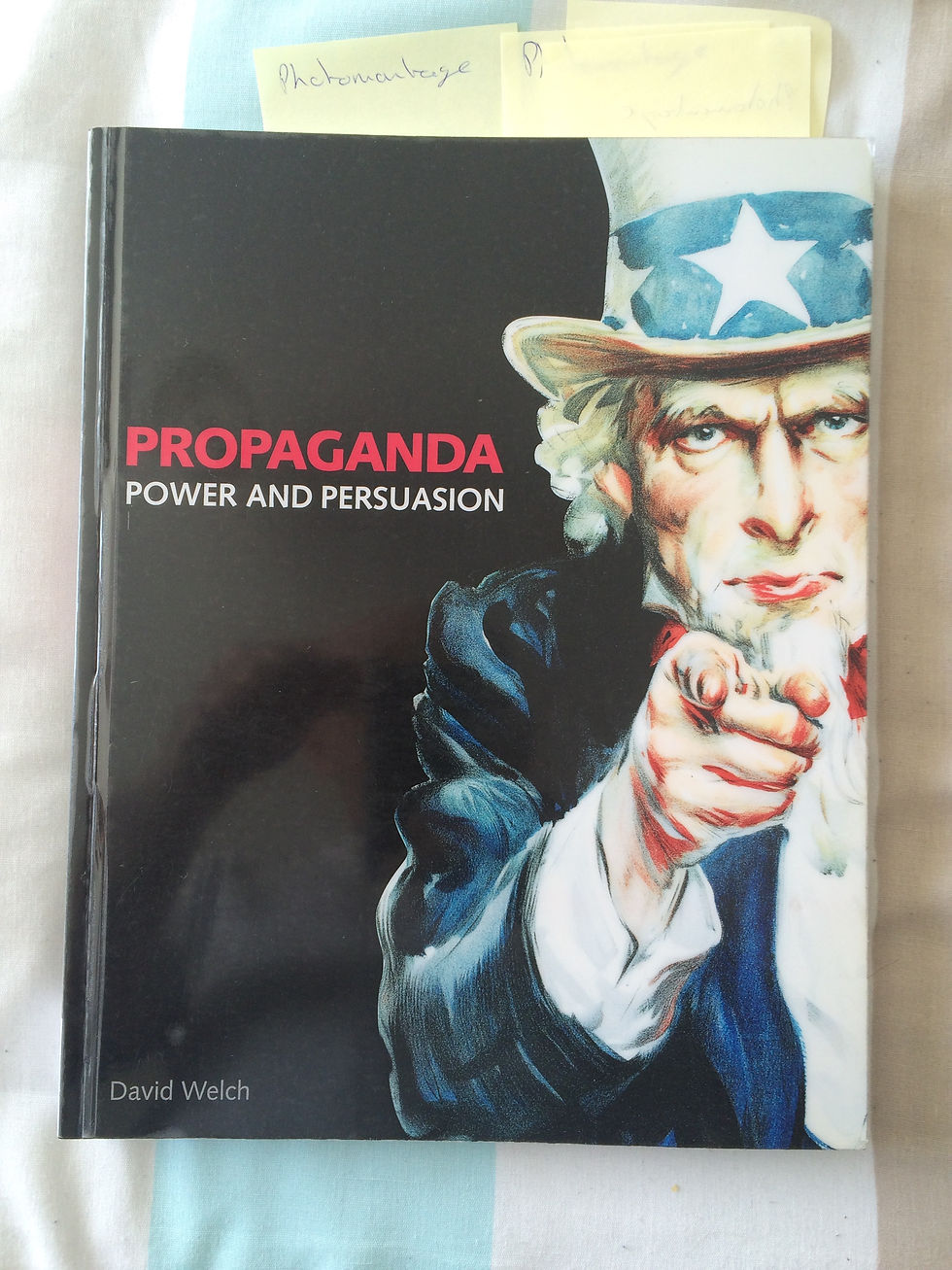Mixed Media Research
- Dave Macey

- Mar 22, 2016
- 3 min read

I’ve just been reading Propaganda: Power and Persuasion by David Welch and concentrating on chapter 5 Know Your Enemy, case studies in negative propaganda.
One of the points that he raises is how propaganda uses the stereotype to either victimise or ridicule and one of the case studies is the victimisation of the Jews under the Nazi regime. The Jews were seen as a threat from within the German society and so posed more of a threat than an external enemy, such as Britain. But they were also used as a scapegoat by the Nazis and became a vehicle of which the regime could use to funnel public anger and also use to bolster German nationalism. Before World War Two most of the anti Semitic propaganda was concentrated through schools and the press and was used to promote the racial ideal of the pure Aryan race, of which German nationalism had become associated with. The Jewish stereotype was portrayed as either being a criminal or a money hoarder or a conspirator against the German state. This produced the effect of the Jewish community being isolated within the German society, victimised on the pretext of criminality and being anti nationalistic as they weren’t true Germans and part of the Aryan race. This propaganda was so affective that when the concentration camps and the extermination camps were created, there was a lack of interest by the German people. The Anti Semitic rhetoric had been used so much by the regime that the ‘Jewish question’ was met with apathy and disinterest, which then meant that genocide could happen without any public outcry. As David Welch puts it “It was no longer necessary after 1941 to publicise the ‘threats’ posed by Jews and as a result the Jewish Question became no more than marginal importance in the formation of the Third Reich. Propaganda had helped to create such apathy and indifference by persuading people that they could retreat into the safety of their private lives and leave the solutions to such ‘problems’ to others” (Propaganda; Power and Persuasion, David Welch, P182)
However, this form of propaganda becomes of interest in relation to the production of the campaign posters to compliment the Manifesto. It would be possible to create propaganda in the same theme, but instead of using the Jewish community, it’s possible to use the immigrant community instead. It is possible to create the immigrant stereotype, someone who has arrived in Britain just to claim benefits, get free health care, education and live in a First World country benefitting from a wealthy state. This theme can cover the five main topics of the posters which is Immigration, Health, Education, Economy and Welfare. This can also use the fear that is in society about immigration and will emphasise a threat on an emotional level instead of an intellectual level, which always makes propaganda more affective. Also, the migrant issue can be used to show a threat that is within our country and also outside our borders, which can make the migrant question and the effect of the propaganda more affective as it’s dealing with one issue from two perspectives. Plus, there are issues of nationalism, terrorism, religion and cultural differences that can be used to heighten the aspect of “us and them”.
One last point is that of ridicule. During the Second World War, a film was made by Charles Ridley called Germany Calling and has used footage of the German Army marching to the song Doing the Lambeth Walk. This demonstrates how by making the enemy look ridiculous, it diminishes their threat and so negates the fear they could use. The film is only 2 mins 18 secs long, but is actually quite funny and demonstrates very well how the threat can be neutralised by using humour in propaganda.



Comments